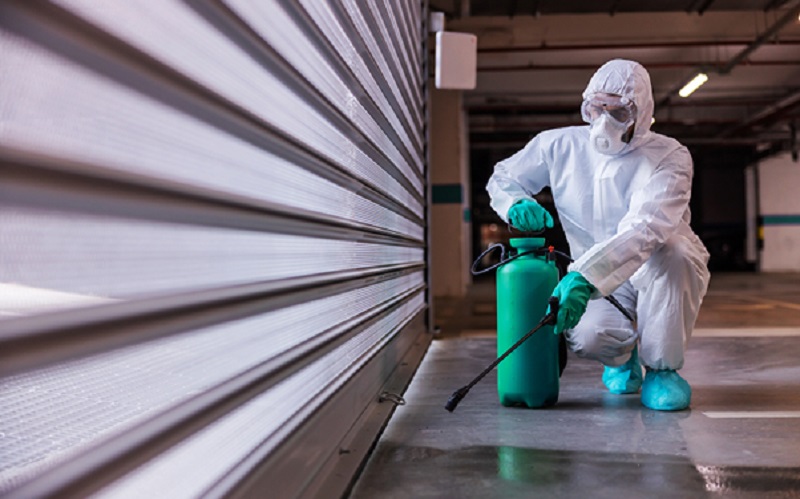Service cost often depends on the pest type and how severe the infestation is. Dealing with common ants or cockroaches typically requires fewer visits and simpler treatment than eliminating bed bugs or termites. Larger infestations require more chemicals, longer man-hours, and repeated treatments. More invasive pests may also need specialist equipment or post-treatment monitoring.
Pest control in Singapore must handle varied infestations across residential and commercial properties. Each pest requires different control strategies, which affect pricing. Service providers consider the infestation stage, property size, and how accessible affected zones are. For instance, treating roof termites in landed properties costs more than eliminating ants in HDB flats due to complexity.
Service providers performing assessments usually inspect the premises before offering a cost breakdown. This ensures accurate pricing based on infestation scope rather than guesswork. Transparent providers communicate why certain pests involve higher costs. Clients should expect detailed reporting that outlines treatment strategy, number of sessions required, and expected recovery time.
Service Frequency and Contract Type
Frequency and contract structure impact service pricing significantly. One-off sessions cost less upfront but often fail to deliver lasting results. Monthly or quarterly plans offer more value over time by preventing repeat infestations and ensuring follow-up.
Many residents opting for pest control in Singapore prefer contractual services, especially in areas like food handling or storage. Service contracts allow ongoing inspections and immediate interventions, reducing downtime and reputational risks. A long-term contract often results in lower per-visit costs.
Homeowners dealing with pests in the early stages may require fewer treatments, while businesses require regular servicing. Some pest control service providers in Singapore offer discounted annual contracts for routine management, which include inspections and prevention efforts. Comparing cost per visit across these service models helps determine value rather than simply the upfront rate.
Methods and Equipment Used
Pest control prices reflect the quality of equipment and treatment used. Companies using modern, chemical-free methods charge more than those using traditional insecticides. Eco-friendly approaches—such as heat or baiting systems—cost more due to higher equipment investment and training requirements.
Firms offering pest control in Singapore often distinguish themselves by treatment effectiveness and safety measures. Treatments involving fumigation or advanced baiting systems demand precise execution and longer exposure periods, which raise operational costs. In contrast, spray-only solutions offer limited coverage, lowering both cost and effectiveness.
Advanced methods often mean quicker results, less property disruption, and better long-term outcomes. While higher costs might deter some, the benefit lies in minimising repeat infestations and preserving indoor environments. Residents and business owners should consider whether long-term efficiency justifies a higher upfront rate.
Certification, Experience, and Staff Training
Professional qualifications influence service rates. Licensed and experienced companies tend to charge more, given their consistent track records, compliance with NEA standards, and trained staff. Pest control services in Singapore must comply with local safety and health guidelines. Employing trained technicians increases labour costs but ensures precise application of treatment.
Quality providers invest in ongoing staff training and updated certifications. This ensures proper handling of equipment, accurate diagnosis, and reduced risk of error. Staff competence directly affects treatment success and customer safety.
Companies with years of field experience often resolve infestations faster and offer tailored solutions. They carry insurance, provide proper documentation, and handle follow-up professionally. While these firms charge more, clients get peace of mind, faster results, and fewer follow-up costs. Avoiding poorly trained technicians helps prevent unnecessary damage or rework costs.
ALSO READ: Tips for Choosing the Right Pest Control Company
Transparency and After-Sales Support
Some companies lure clients with cheap packages but exclude essential after-sales services. Hidden charges for follow-ups, extra treatments, or extended warranties inflate the total cost. Transparent providers give detailed quotations, explain every charge, and commit to clear timelines.
Good pest control in Singapore includes post-treatment monitoring and client education. Proper aftercare identifies signs of re-infestation and prevents recurrence. A comprehensive service may include sealing entry points, advising on food storage, or waste handling improvements.
Inclusions like re-treatment guarantees or free follow-up inspections enhance service value. Clients should always request a full breakdown to see if extra costs arise later. Choosing transparency over vague quotations prevents billing surprises. Paying more for full-service packages saves money in the long term.
Choosing effective pest control in Singapore means prioritising expertise, safety, and transparency over just cost. Contact First Choice Pest Specialist for a reliable pest control service in Singapore.





